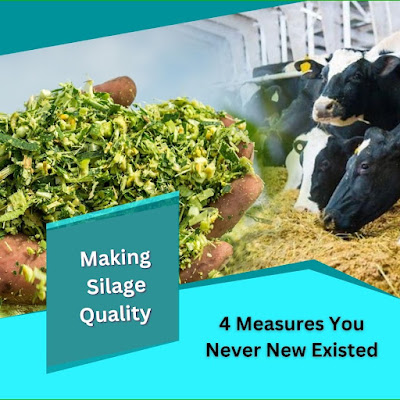Tips to get the most from your silage stack
We all know that there are various ways to do each task in agriculture, there will be different opinions by different farmers and contractors on what can be the best way to make a silage bunker or stack and neither one is right or wrong.
The way by which you as a farmer can
make a silage bunker depends on your geographic location and the weather
conditions over there. But the principles applied to making a nice silage stack
are the same everywhere.
We at Punjab Silage have collected 6 efficient tips to help you in
stacking your Silage Bales.
The tips for stacking silage
Choosing the correct site and preparing
it: - To make a
nice stack, you need to choose the right site on your farm first. Space, where
you are planning to stack the fodder, should be protective of wind, it should
be something similar to a trench or bunker and it needs to be free of drainage.
You should have or make a slope that
is away from the stack location to stop rainwater from ruining your stack and
your silage during storage. It should also not be at a high water table area.
Your stack should also not be too close to water bodies and other eco-sensitive
areas so that adverse effects can be avoided during silage run-off.
Harvesting quality crop: - You should always keep in mind
that, only a high-quality crop can make high-quality silage. You must select a
special hybrid crop, have proper sowing time and proper weed control.
You should try to cut the crop 1or 2
days after sunny weather for good sugar levels. We would also suggest for you
to chop off the crop only when there are no more than 10% of heads appearing on
the crop. The chopping length also matters; the shorter it is the less air is
packed in the crop which helps during the packing process. You should also add
a good inoculant for better fermentation.
The packing should be best: - You should pack and compress your silage
in a way that it is as thick as possible as this can be helpful to remove air
from the stack. Short chopped silage minimizes the trapped air in the stack.
We would suggest you distribute your
silage across 100-150mm layers before compression. To find out if your silage
is properly layered or not, you can try inserting your fingers into the stack,
if it’s difficult for you, then you can add more layers into the bale. After
packing and compression, you can move to the next step.
Sealing should be quick and proper:
- You should
pack the silage into bales as fast as possible so that the stack can be sealed
for good fermentation which is free of oxygen. You can use these tips from the Best Silage Suppliers in India for good packing.
·
You
should remove all creases and folds on the cover.
·
Making
sure that all holes are taped and sealed is key.
·
You
should weigh down the cover to keep it on and free of damage.
·
Seal
the base with a layer of lime or sand.
Protection of Silage: - All the hard work that you did on
planting, growing, harvesting, packing, and sealing the forage crop will be
gone to waste if birds and mice just wander around and poke holes in the stack
and eat some of the silage that was for your lovely cattle.
Taking precautions like, placing bird
nets on top and rodent bait stations all around the stack can be helpful. You
should also remove any kind of vegetation from around the stack to not attract
birds to your pile of silage bales.
Planning to feed: - So now it’s time to feed healthy and
tasty silage to your cattle you should keep these tips in mind before opening
your stack.
·
You
should open the stack in a direction opposite of wind to prevent air from
getting in the cover.
·
There
are high chances of damage, if air gets into the stack, you should push the
stack towards the back 15cm per day, to ensure this is done properly, you
should calculate the feed out rate so that you are sure to make a stack of
appropriate size.
· Using
a tine will ensure that you grab more silage out of the bales without
disturbing the stack structure.
·
You
should throw away spoiled silage if any and also make sure that
there is no loose material at the base of the stack.



Comments
Post a Comment